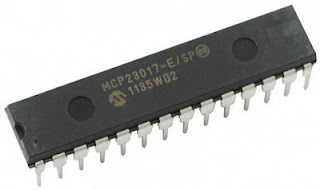I'm connecting many momentary switches to a IO expander, like the MCP23017:
 .
.
I read that I need to put pull-up resistors for each switch connected to the MCP23017. On another place (datasheet), I read:
GPA1 Bidirectional I/O pin. Can be enabled for interrupt-on-change and/or internal weak pull-up resistor.
GPA2 Bidirectional I/O pin. Can be enabled for interrupt-on-change and/or internal weak pull-up resistor.
Question: do I really need to add resistors myself between the IO expander and the switches or not?
Note: Here is how I would connect the tact switches to MCP23017 (which is then connected to a Raspberry Pi): will this work, without any external pull-up resistors?

simulate this circuit – Schematic created using CircuitLab



